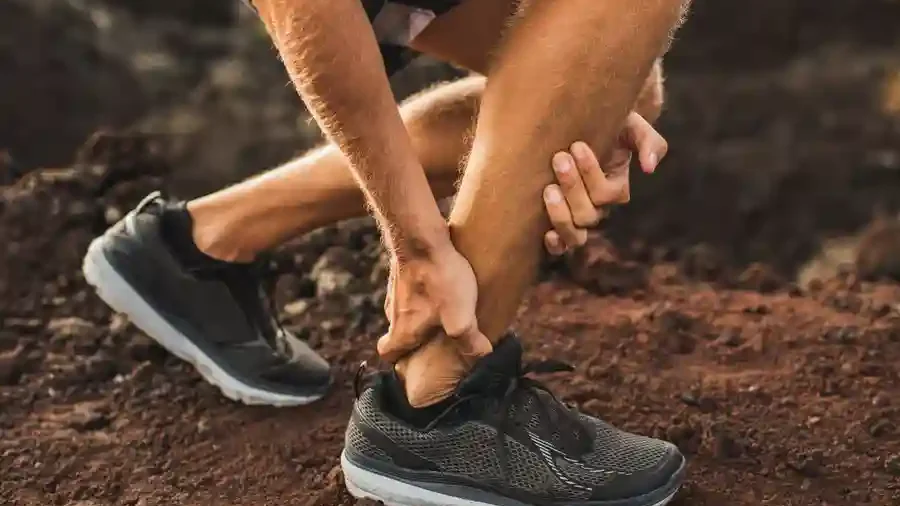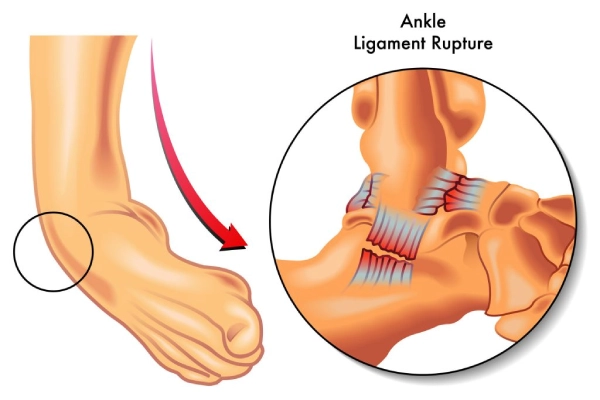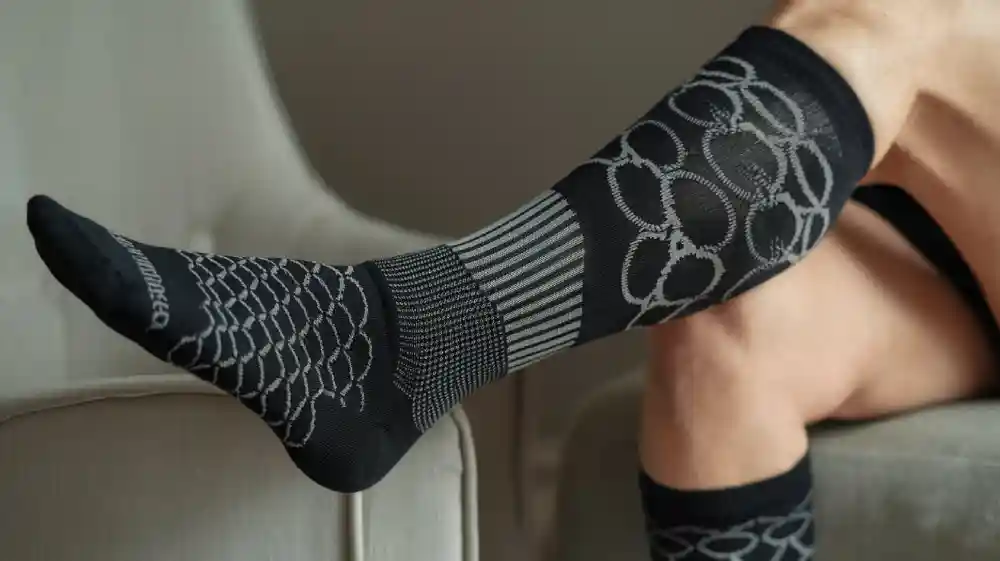
Quick Answer: Compression helps control swelling after an ankle sprain, but it’s not a stand-alone cure and doesn’t replace bracing or rehab. Offer it as part of a complete recovery toolkit.
Sprained ankles are one of the most common sports injuries, accounting for about 20% of all sports-related injuries. This injury can cause significant discomfort and disrupt daily activities. Compression socks have emerged as a popular remedy, helping to reduce swelling and promote faster healing by improving circulation. According to NHS research, compression can significantly reduce post-injury swelling, with studies showing a reduction of up to 30%. For brands and retailers looking to expand their product offerings, understanding the benefits and risks of compression socks is essential. In this blog, we’ll delve into these aspects, providing data and expert insights to help you make informed decisions about incorporating compression socks into your product lineup.
Understanding the Basics of Ankle Sprains

Ankle sprains, often resulting from an unnatural twisting of the ankle that leads to ligament strain or tears, are a prevalent injury affecting approximately 23,000 people in the U.S. daily. Symptoms typically include pain, swelling, bruising, and tenderness around the ankle joint. Sprains are classified into three levels of severity:
- Grade I: Involves ligament stretching without tearing. Individuals can usually bear weight within a few hours, with recovery typically taking 2-3 weeks.
- Grade II: Entails partial tearing and stretching of the ligaments. This grade is more painful, heals more slowly, and may cause damage to blood vessels and significant bruising in the joint.
- Grade III: Characterized by severe ligament tears, resulting in ankle instability. This grade involves intense pain and swelling and can take months to fully recover.
For brands and retailers, understanding these classifications is crucial when designing or selecting compression socks tailored to different levels of injury severity, ensuring that your products meet the specific needs of your target market.
How (and When) to Wear Compression Socks

Timing: Start Smart, Not Too Soon
The first 48–72 hours after an ankle sprain are all about controlling inflammation. Focus on rest, ice (15–20 minutes at a time), and elevation as your frontline defense. Once the swelling begins to settle, compression socks step in as a powerful ally—keeping fluid from reaccumulating and helping you transition from acute care to recovery.
Day vs. Night: When to Keep Them On
Compression works best while you’re on your feet and moving. During the day, socks maintain steady pressure and circulation support. At night, however, remove them. While you sleep, your circulation slows and you’re less likely to notice warning signs like numbness or excessive tightness. Think of it as giving your ankle—and your skin—a chance to breathe.
Fit & Pressure: Finding the “Snug but Safe” Zone
For most sprained ankles, a moderate compression level of 15–30 mmHg is ideal. The fit should feel snug and supportive, never painful. Watch for red flags: numb toes, tingling, or bluish discoloration mean the sock is too tight and circulation is compromised. Always smooth out wrinkles when putting them on—creases can create uncomfortable pressure points.
| Method | Best Timing | Main Benefit | Limitations / Notes |
|---|---|---|---|
| Ice (Cryotherapy) | First 48–72 hours | Reduces pain and constricts blood vessels to limit swelling | Needs reapplication every 2–3 hours; risk of skin injury if applied too long |
| Elevation | First 2–3 days, whenever resting | Promotes drainage of excess fluid, helps prevent severe swelling | Only works while ankle is raised above heart level |
| Compression Socks | After initial acute phase, days to weeks | Continuous daytime edema control, improves circulation, adds comfort | Limited mechanical support; must remove at night |
| Ankle Brace / Taping | Grade II–III sprains or when returning to sport | Provides structural stability, proven to shorten return-to-play | Can feel bulky; may restrict some mobility |
When Compression Isn’t Enough

Compression socks are excellent for swelling control, but they’re not built for structural support. If you’re dealing with a Grade II or III sprain—where ligaments are partially or completely torn—add an ankle brace. Braces restrict harmful motion more effectively than socks and have been shown in the British Journal of Sports Medicine to speed up return to activity.
And don’t ignore the red flags: inability to bear weight, severe pain, deformity, or swelling that keeps worsening. In these cases, skip the socks and seek immediate medical evaluation.
How Compression Stacks Up Against Other Treatments
- Ice & Elevation: Best during the first 2–3 days. Ice numbs pain and constricts vessels; elevation helps fluid drain.
- Compression Socks: Take over as you get mobile, keeping daytime swelling in check and circulation flowing.
- Braces & Taping: Superior for stability and return-to-sport outcomes when compared with compression alone.
For Brands & Retailers: Positioning Compression Right

- Positioning: Market compression socks as “swelling control and comfort enhancers”, not as a brace replacement. Back this up with links to clinical guidance (e.g. NICE CKS).
- Product Mix: Offer multiple compression levels (15–20 and 20–30 mmHg), plus breathable, seamless options for sensitive skin. Include clear day-use instructions.
- Bundling: Pair socks with ankle braces and cold-therapy products. Consumers (and clinicians) know functional bracing improves recovery—cross-selling strengthens both outcomes and trust.
your products and encourage their integration into comprehensive treatment plans. Additionally, partnering with healthcare professionals to endorse your compression socks can further validate their effectiveness and reliability.
FAQs
Does wearing compression socks help with a sprained ankle?
Yes—compression socks can help reduce swelling and improve circulation after a sprain. They provide gentle support and comfort, making daily movement easier. However, they don’t replace ankle braces, which are needed for higher-grade sprains to add structural stability.
When not to wear compression socks?
Avoid wearing compression socks if you have severe vascular disease, advanced diabetes with neuropathy, or significant heart failure, as pressure may worsen circulation problems. Also, do not wear them while sleeping unless advised by a clinician, since unnoticed tightness can compromise blood flow.
What’s the fastest way to heal a sprained ankle?
The quickest path to recovery is following the RICE/PEACE & LOVE protocol—rest, ice, compression, elevation, and early gentle movement when safe. Adding an ankle brace for stability and starting guided rehab exercises as soon as pain allows can shorten recovery time and reduce re-injury risk.
How long should I wear compression socks per day?
Most people benefit from wearing them throughout the day while moving around, then removing them before bedtime. This helps manage swelling without risking circulation issues during sleep. Always follow healthcare advice if you have underlying conditions.
Can compression socks prevent future sprains?
While they don’t guarantee prevention, compression socks can improve proprioception (awareness of joint position) and reduce swelling after intense activity. Combined with strengthening and balance training, they can lower your risk of repeat injuries during sports or daily activities.
Conclusion

Compression socks are an effective swelling-control and comfort solution for sprained ankles, best used alongside bracing and rehab.
For retailers and distributors, this is a clear opportunity: partner with Max Hosiery to deliver high-quality, customizable compression socks that strengthen your recovery product lineup and win customer trust.er, they should complement traditional treatments like ice and elevation, not replace them.
For brands, adding compression socks to your product lineup can enhance your brand’s appeal to health-conscious customers. By offering an effective recovery solution, you can expand your product range, attract loyal buyers, and boost your brand’s reputation.
